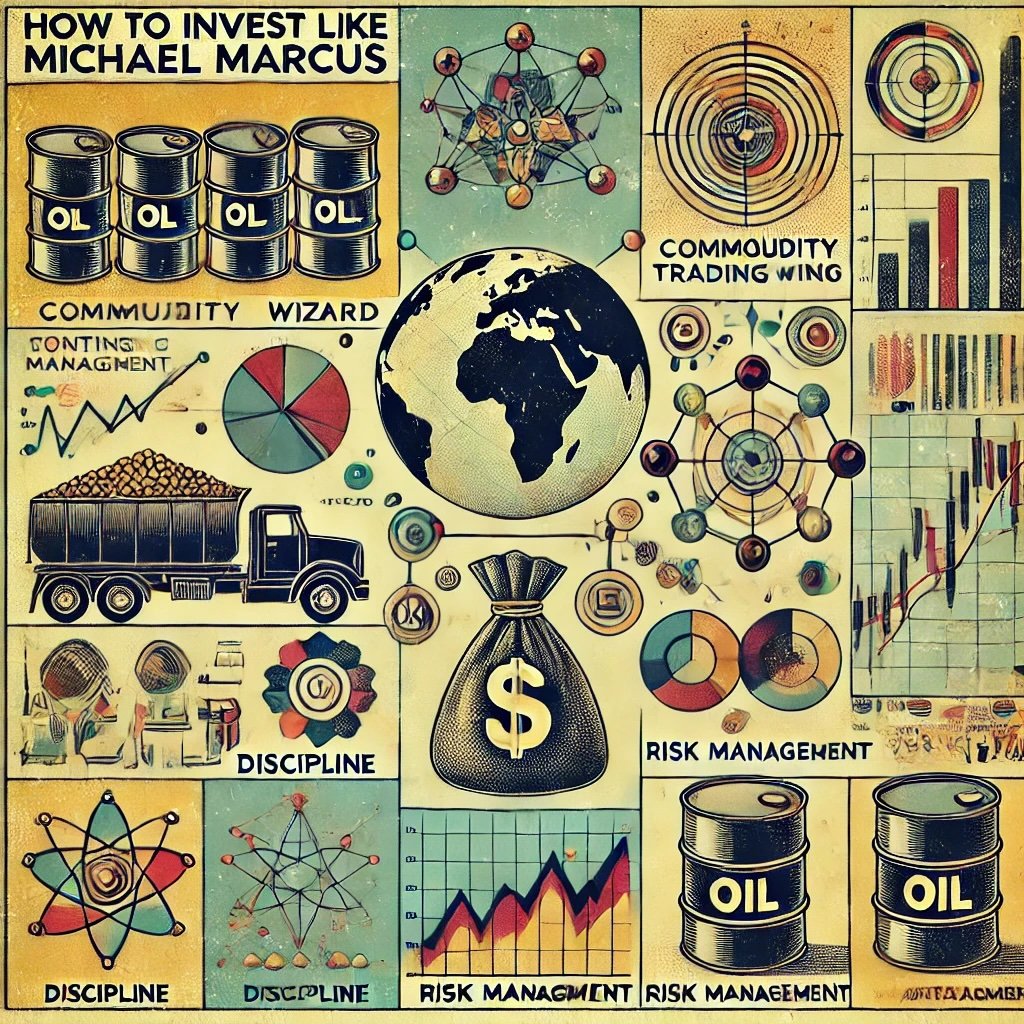Warren Edward Buffett, an emblematic figure in the world of investing, occupies a paramount position for his remarkable acumen and extraordinary track record in capital allocation. Born on August 30, 1930, Buffett’s journey from a paperboy in Omaha, Nebraska to the Chairman and CEO of Berkshire Hathaway, one of the most successful investment conglomerates globally, is a testament to his unique investment philosophy, financial prowess, and strategic ingenuity.
His astute understanding of the stock market, combined with his knack for identifying undervalued companies, has led to his moniker – the “Oracle of Omaha.” Warren Buffett’s investment strategy, deeply rooted in the principles of value investing, has withstood the capricious tides of economic fluctuations, thereby solidifying his status as one of the most successful investors of all time.

Significance of Buffett’s investment philosophy
Buffett’s investment philosophy, often characterized as a practical application of Benjamin Graham’s teachings, is underscored by a stringent set of investment criteria that aims to mitigate risk while ensuring substantial returns over the long term. Unlike speculative investment strategies which often hinge upon the uncertainties of market trends and sentiments, Buffett’s methodology places significant emphasis on the intrinsic value of businesses, their operational history, management quality, financial soundness, and market valuation. His philosophy exemplifies the confluence of economic rationality, patience, and profound business understanding. The pertinence and endurance of Buffett’s investment approach in generating consistent returns, despite market volatility, underscores its significance in the investment arena.
Exploration of Warren Buffett’s investment criteria
The purpose of this article is to undertake a comprehensive exploration of Warren Buffett’s investment criteria. Through an in-depth analysis of Buffett’s philosophy and methods, the article aims to unravel the fundamental principles that underpin his investment strategy. In addition to investigating the core tenets of Buffett’s investment approach, the article seeks to elucidate how these principles have been practically applied in various investment decisions. Furthermore, this article will examine the criticisms and potential limitations of Buffett’s methodology, thereby providing a balanced perspective. Ultimately, this piece strives to distill valuable insights from Buffett’s investment philosophy that individual investors can implement in their investment decisions.

Understanding the Buffett Way
Value investing, a cornerstone of Buffett’s investment philosophy, is an analytical approach pioneered by Benjamin Graham and David Dodd during the early 20th century. This investing paradigm underscores the pursuit of securities undervalued by the market, presenting a promising investment opportunity. It posits that meticulous financial analysis, predominantly focused on a company’s fundamental characteristics like earnings, dividends, free cash flow, and overall financial health, can reveal discrepancies between a company’s market price and its intrinsic value.
The exploitation of these discrepancies can yield significant returns when the market eventually recognizes and corrects this undervaluation. The discipline, patience, and risk-averse approach espoused by value investing resonate profoundly with Buffett, solidifying its influence over his investment ideology.

Importance of Intrinsic Value
Intrinsic value, a pivotal element in the realm of value investing, refers to an estimation of an asset’s true worth, independent of its current market price. In essence, it represents the present value of all future cash flows that can be derived from an asset, adjusted for risk and time-value of money. Buffett often likens the calculation of intrinsic value to measuring the size of an irregularly shaped rubber ball; the measurements may not be precise, but they will certainly provide a reasonable range.
A rigorous understanding and accurate estimation of a company’s intrinsic value facilitates informed investment decisions. For Buffett, the intrinsic value is not merely a numerical estimate but a comprehensive understanding of the company’s operational strength, competitive advantage, and future potential. This holistic understanding allows him to buy undervalued stocks and hold them until the market price converges with his estimation of their intrinsic value, thus realizing substantial returns.

The Circle of Competence Concept
The Circle of Competence, another key principle in Buffett’s investment philosophy, denotes the realm of understanding or expertise of an investor. Buffett propounds that investors should restrict their investment decisions to sectors or industries they are well-acquainted with or have substantial experience in. This approach allows them to make more informed and confident decisions, leveraging their superior knowledge of their circle of competence against the general market’s collective wisdom.
Instead of diversifying into a myriad of unfamiliar sectors, Buffett advocates for focused investing within one’s circle, thereby reducing the risk of misjudgment and potential losses. This concept underscores the importance of continuous learning and knowledge expansion to gradually increase one’s circle of competence, thereby opening up new investment opportunities.
source: The Financial Review on YouTube

Detailed Analysis of Buffett’s Investment Criteria
Business Characteristics
Understandable and Simple Business Model
One fundamental criterion that Warren Buffett adheres to when selecting investments is the simplicity and understandability of a company’s business model. He prefers investing in enterprises whose business models are transparent, straightforward, and relatively easy to understand. This criterion aligns with his belief in the Circle of Competence concept, which emphasizes investment within an individual’s sphere of knowledge and expertise. Companies with complex business models that are difficult to comprehend are more likely to possess hidden risks, making them unsuitable for Buffett’s risk-averse approach. The simplicity of a business model enables an investor to accurately project future earnings, understand the risks involved, and determine a fair intrinsic value for the company. In Buffett’s parlance, an investor should be able to encapsulate the business model of their investment on the back of a napkin.
Consistent Operating History
Consistency in a company’s operating history is another crucial criterion in Buffett’s investment philosophy. Buffett leans towards companies with a robust track record of stability and consistent performance rather than those in their nascent stage or that demonstrate erratic performance. A consistent operating history typically reveals a company’s resilience against various market conditions, its ability to deliver steady profits, and the effectiveness of its business model. This analysis is not confined to numerical consistency, but also extends to a company’s operational, strategic, and managerial consistency. Buffett believes that past performance, although not a foolproof indicator, can provide considerable insights into a company’s future prospects.
Favorable Long-Term Prospects
Warren Buffett is renowned for his long-term investment approach, often holding his investments for several decades. Consequently, he places significant emphasis on the long-term prospects of a company. Before investing, Buffett assesses whether the company possesses a durable competitive advantage that can protect its market share and profitability against competitors over the long term. These advantages could range from strong brand names, patents, and scale advantages to unique corporate culture and superior operational efficiency. A company with robust long-term prospects will be able to grow its intrinsic value over time, offering higher returns for patient investors. Buffett’s emphasis on long-term prospects underscores his conviction in time compounding, often quoting his mentor, Benjamin Graham, who said, “In the short run, the market is a voting machine but in the long run, it is a weighing machine.

Management Evaluation
Rationality in Capital Allocation
Rationality in capital allocation is a principal consideration in Warren Buffett’s assessment of a company’s management team. A judicious and astute deployment of capital is indicative of a management team’s financial acuity and their ability to deliver substantial shareholder value. Buffett scrutinizes how management allocates capital between reinvestments into the business, debt repayment, acquisitions, dividends, and share repurchases, aiming to discern their commitment to optimizing shareholder returns. He typically prefers companies that invest in profitable projects, acquire businesses at sensible prices, and return excess capital to shareholders judiciously. Buffett’s focus on this attribute is underpinned by his belief that the intelligent use of capital today can yield outsized returns over time, thereby augmenting a company’s intrinsic value.
Candidness in Communication with Shareholders
Buffett values management that communicates candidly and transparently with shareholders. This criterion reflects his belief that shareholders are partners in the business, deserving honesty about the company’s performance, challenges, and strategies. He appreciates management teams that acknowledge mistakes, provide clear and insightful explanations of the company’s performance, and set realistic expectations for the future. Buffett’s annual letters to Berkshire Hathaway shareholders exemplify this approach, often providing lessons from his own investment mistakes and detailed accounts of the company’s operations. Such transparency fosters trust, facilitates informed decision-making, and strengthens the bond between a company and its shareholders.
Resistance to Institutional Imperative
The Institutional Imperative, a term coined by Buffett, refers to the tendency of businesses to blindly mimic the behavior of their peers, irrespective of whether these actions make inherent sense. This could manifest as following industry trends, mindlessly growing the size of the company, or making acquisitions for the sake of appearing active. Buffett appreciates management teams that resist this institutional imperative, maintaining an independent stance based on their own rational analysis rather than succumbing to industry norms or Wall Street expectations. This characteristic often indicates a management team’s confidence, independent thinking, and focus on long-term value creation. Buffett’s disdain for the institutional imperative illustrates his endorsement of contrarian thinking and his emphasis on rational decision-making over herd mentality.
source: Learn to Invest – Investors Grow on YouTube
Financial Measures

High Return on Equity (ROE)
Return on Equity (ROE), a key financial metric, serves as an essential indicator of a company’s profitability and efficiency in Warren Buffett’s investment criteria. ROE, calculated by dividing net income by shareholders’ equity, provides a measure of the profits a company generates from the funds shareholders have invested in it. Companies with a high ROE are often able to utilize their capital more efficiently to generate profits. Buffett views a consistently high ROE as a sign of a company’s economic moat or competitive advantage, which could range from brand power to cost advantages. However, it is paramount to consider that a high ROE should not be achieved through excessive leverage, as that could signal potential financial risk. Buffett’s preference for high ROE companies embodies his belief in investing in efficient, profitable enterprises with robust competitive advantages.
High Profit Margins
High profit margins, another significant financial measure in Buffett’s investment criteria, are indicative of a company’s operational efficiency and pricing power. Profit margin, expressed as a percentage, illustrates how much profit a company generates for each dollar of sales. A high profit margin often signifies a strong competitive position, superior products or services, efficient cost management, or some combination thereof. It also provides the company with a cushion to withstand periods of economic downturn or increased competition. By focusing on companies with high profit margins, Buffett ensures that his investments possess robust profitability and resilience, reinforcing his emphasis on investing in high-quality businesses.
Low Debt Level
In line with his risk-averse approach, Buffett prefers companies with low debt levels. Excessive debt can not only increase the financial risk of a company but can also limit its ability to weather periods of financial stress or invest in profitable projects. A low debt level is indicative of a company’s strong financial health, disciplined capital management, and ability to generate sufficient cash flows from operations. Buffett often uses the debt-to-equity ratio, a measure of a company’s total liabilities relative to its shareholder equity, to assess a company’s debt level. A low debt-to-equity ratio generally suggests a more financially stable enterprise. This preference for low-debt companies underlines Buffett’s cautionary stance towards financial risk and his focus on preserving capital.
source: The Long-Term Investor on YouTube

Market Value Vs Intrinsic Value
Significance of a Margin of Safety
The concept of a margin of safety, integral to Buffett’s investment approach, underscores the importance of ensuring a buffer between a company’s market price and its intrinsic value. Conceived by Benjamin Graham, Buffett’s mentor, the margin of safety is a risk-aversion tactic which posits that the lower the price one pays for a given set of future cash flows, the higher the rate of return and the lower the risk. This strategy acts as a safeguard against potential errors in intrinsic value estimation and unforeseen adverse events. Buffett often seeks to invest in companies when their market value is significantly lower than their intrinsic value, thereby providing a substantial margin of safety. This approach exemplifies his philosophy of being fearful when others are greedy and greedy when others are fearful. The focus on a margin of safety illustrates Buffett’s conservative investment style and his relentless emphasis on capital preservation.
Focus on Buying Businesses, Not Stocks
Buffett is renowned for his perspective of stock purchases as buying businesses, not just owning pieces of paper. This principle stems from his belief in the paramount importance of a company’s underlying fundamentals rather than its stock price movements. When Buffett invests in a company, he evaluates it as if he were buying the entire business. This approach involves a comprehensive understanding of the company’s business model, industry position, competitive advantage, management quality, and financial health. By focusing on these fundamental aspects, Buffett can assess the company’s ability to generate sustainable profits over the long term. This mindset ensures a focus on the company’s intrinsic value, allowing Buffett to take advantage of market overreactions and underreactions. The perspective of buying businesses, not stocks, underpins Buffett’s long-term investment horizon and his dismissal of speculative trading based on price movements.

Case Studies: Applying Buffett’s Criteria
Case Study 1: Coca Cola
Coca Cola, one of the most iconic investments in Buffett’s portfolio, exemplifies his investment criteria in action. With its straightforward and globally recognized business model, Coca Cola falls well within Buffett’s Circle of Competence. Its consistent operating history, characterized by steady sales growth and strong brand loyalty, further aligns with Buffett’s preference for stable and predictable businesses. The company’s durable competitive advantage, derived from its unparalleled brand power and extensive distribution network, provides favorable long-term prospects.
In terms of management evaluation, Coca Cola’s rationality in capital allocation, as evidenced by its balanced mix of dividends, reinvestments, and acquisitions, aligns with Buffett’s principles. The company’s candid communication with shareholders and its resistance to the Institutional Imperative, demonstrated by its focus on core operations rather than diversifying into unrelated businesses, further reflect Buffett’s criteria.
Financially, Coca Cola exhibits a high ROE, high profit margins, and manageable debt levels, attesting to its operational efficiency, pricing power, and financial health. Finally, when Buffett initially invested in Coca Cola in 1988, the market undervalued the company due to temporary issues, allowing him to buy the business at a significant discount to its intrinsic value, thereby providing a substantial margin of safety.

Case Study 2: Apple Inc.
Apple Inc., another significant holding in Buffett’s portfolio, showcases his investment criteria adeptly. While technology companies generally fall outside Buffett’s traditional Circle of Competence, he has noted that Apple’s business model, based around consumer products rather than technical services, is simple and understandable. The company’s consistent operating history and its strong brand and ecosystem, which provide a durable competitive advantage, offer favorable long-term prospects.
Apple’s management, particularly under CEO Tim Cook, has demonstrated a rational approach to capital allocation, balancing R&D investment, acquisitions, dividends, and share repurchases. The company’s candid communication with shareholders and its ability to resist the Institutional Imperative, focusing on delivering superior products rather than diversifying extensively, align with Buffett’s principles.
Apple’s high ROE, high profit margins, and relatively low debt levels, despite significant R&D expenditure and share repurchases, attest to its robust financial health and operational efficiency. Furthermore, when Buffett started amassing Apple shares in 2016, many investors underestimated the company’s future growth potential, allowing him to invest at a price that offered a reasonable margin of safety relative to his estimation of its intrinsic value.
Case Study 3: Berkshire Hathaway’s Acquisition of BNSF Railway
Berkshire Hathaway’s acquisition of BNSF Railway in 2009 serves as a quintessential example of Buffett’s investment philosophy. The railroad business, simple and essential, is well within Buffett’s Circle of Competence. BNSF’s consistent operating history and its long-term prospects, backed by the irreplaceable nature of its vast rail network, reflect Buffett’s criteria.
BNSF’s management had shown effective capital allocation, directing funds towards track maintenance and upgrades to ensure safety and improve efficiency. The company also communicated candidly with shareholders and demonstrated a resistance to the Institutional Imperative by focusing on its core competency in rail transport.
From a financial perspective, BNSF maintained a reasonable debt level considering the capital-intensive nature of the rail industry. Its ROE and profit margins, while not exceptional due to industry characteristics, were solid compared to industry peers. When Berkshire acquired BNSF, the railway industry was facing near-term headwinds due to the economic downturn, which allowed Buffett to purchase the company at a price that provided a margin of safety and reflected the industry’s long-term importance to the U.S. economy.

Criticisms and Limitations of Buffett’s Investment Criteria
Criticism from Modern Portfolio Theory Advocates
One of the primary criticisms of Buffett’s investment criteria comes from advocates of the Modern Portfolio Theory (MPT). MPT posits that investment risk can be minimized through diversification across a broad range of assets, arguing for a focus on the portfolio’s overall risk and return characteristics rather than the analysis of individual securities. Buffett’s approach, with its concentration on a limited number of high-quality businesses, contradicts this principle of diversification. Critics argue that Buffett’s method exposes investors to unsystematic risk, which could be mitigated through broader diversification. It’s also noted that Buffett’s success may be partially attributed to his unique access to information and deals not available to average investors.
Limitations in Technology and High-Growth Sectors
Buffett’s investment criteria, with its focus on simple, understandable businesses with consistent operating histories, may limit opportunities in technology and other high-growth sectors. These industries are often characterized by complex business models, rapid change, and unpredictable futures, traits that conflict with Buffett’s investment principles. As a result, followers of Buffett’s approach might miss out on substantial investment opportunities in these sectors. For instance, Berkshire Hathaway was notably late to invest in tech giants like Apple and Amazon, potentially forgoing significant earlier gains.
Reliance on Macroeconomic Stability
Another limitation of Buffett’s criteria relates to its reliance on macroeconomic stability. Buffett’s method, which places substantial emphasis on a company’s long-term prospects and its ability to generate steady cash flows, presumes a relatively stable macroeconomic environment. However, during periods of extreme economic volatility or structural shifts in the economy, these assumptions might be less valid. For example, industries severely affected by the COVID-19 pandemic, such as travel and hospitality, may have been viewed favorably under Buffett’s criteria pre-pandemic but faced drastic shifts in their long-term prospects due to these unprecedented circumstances. Therefore, while Buffett’s approach has proven successful over many decades, it may not be universally applicable across all economic conditions and sectors.
source: Investment Knowledge on YouTube

Lessons for Individual Investors
Importance of a Long-term Investment Perspective
One of the foremost lessons that individual investors can glean from Warren Buffett’s investment criteria is the importance of maintaining a long-term investment perspective. Buffett’s approach, predicated on the analysis of a company’s enduring fundamentals and intrinsic value, necessitates a long-term horizon. His philosophy of buying businesses rather than trading stocks encourages investors to consider the longevity and sustainability of a company’s competitive advantage, its capacity to generate consistent profits, and its potential for long-term value creation. This long-term perspective can shield investors from short-term market noise and foster more disciplined investment decisions, reinforcing the precept that investing is akin to owning a piece of a business for a substantial period.
Need for Independent Thinking
Another salient lesson from Buffett’s investment criteria is the need for independent thinking. By valuing management’s resistance to the Institutional Imperative and advocating for investments when there is a significant margin of safety, Buffett underscores the significance of contrarian thinking. Independent thought allows investors to form their own judgments about a company’s intrinsic value, rather than merely following market sentiment or trends. This autonomy enables investors to capitalize on market inefficiencies, buying undervalued companies or selling overvalued ones, which may lead to superior investment returns. Independent thinking fosters a more nuanced understanding of investment decisions, promoting a more proactive and less reactive approach to investing.
Value of Patience in Investing
Finally, Buffett’s investment criteria underscore the value of patience in investing. Buffett’s principle of waiting for a substantial margin of safety before investing exemplifies patience, often requiring investors to wait for market prices to fall below the estimated intrinsic value. Additionally, the emphasis on long-term prospects means investors may need to wait years for a company’s intrinsic value to be reflected in its market price fully. Patience also extends to holding investments; once invested, Buffett is known for his “buy and hold” strategy, often maintaining ownership for many years to reap the benefits of compounding. This patient approach can help individual investors avoid impulsive decisions driven by short-term market fluctuations and focus on the more important task of long-term value creation.

The Influence of Charlie Munger on Buffett’s Investment Philosophy
The Importance of Mental Models
Charlie Munger, the vice chairman of Berkshire Hathaway and a long-time business partner of Warren Buffett, has had a profound influence on Buffett’s investment philosophy. One of Munger’s most notable contributions is the concept of “mental models”. Rooted in the principle of interdisciplinary learning, mental models espouse the notion of integrating knowledge from a wide array of disciplines, such as psychology, economics, and history, to make better investment decisions. Munger posits that having a latticework of these theoretical models enables investors to view potential investments from multiple perspectives, thus providing a more holistic and accurate understanding of the business. This philosophy, contrasting with Buffett’s early focus on financial analysis inspired by Benjamin Graham, emphasizes the importance of qualitative factors in assessing a company’s intrinsic value.
Under Munger’s influence, Buffett started to place more importance on the quality of a business, its competitive advantage, and the ability of its management, even if it meant paying a premium to the company’s net tangible assets. This shift has led to investments in high-quality businesses like Coca Cola and See’s Candies, which didn’t come cheap but had robust brand power and pricing power, providing them with an economic moat that can protect their long-term profitability.
The Evolution of the Berkshire Investment Strategy
Munger has also played a pivotal role in the evolution of Berkshire Hathaway’s investment strategy. Initially, Berkshire Hathaway, under Buffett’s control, was primarily a vehicle for investments in publicly traded companies. However, Munger introduced the concept of buying entire businesses, which would then operate under the Berkshire umbrella. This strategy provided dual benefits: it offered a way to invest large sums of money (a growing problem as Berkshire’s capital base expanded), and it allowed Berkshire to benefit from the full cash flows of these businesses rather than just the dividends paid out to shareholders.
This shift in strategy led to Berkshire Hathaway’s transformation from a company focused on publicly traded investments to a conglomerate owning a diverse array of businesses across sectors. Notable acquisitions include the purchase of BNSF Railway and Precision Castparts, among others. This evolution has provided Berkshire with a robust cash-generating engine, allowing it to withstand economic downturns and providing capital for further investments. This strategic transformation, influenced significantly by Munger, has been instrumental in Berkshire Hathaway’s phenomenal success over the decades.

Comparison with Other Investment Giants
Peter Lynch and Growth Investing
Peter Lynch, the legendary portfolio manager of the Fidelity Magellan Fund, is best known for his growth investing approach, which is somewhat distinct from Buffett’s value investing philosophy. Lynch famously said, “I’m always looking for the next big trend, where you can invest in a company and hold it for many years. The real money is made in the sitting, not the thinking.”
Lynch’s growth investing approach involves seeking out companies that are expected to grow earnings at an above-average rate compared to other firms. This is different from Buffett’s emphasis on purchasing companies at a significant discount to their intrinsic value. While Lynch does advocate for investing in businesses that are easily understood, his focus on growth leads him to industries and sectors typically avoided by Buffett, such as technology or other rapidly evolving sectors. It’s worth noting, though, that both approaches underline the importance of long-term investment and the power of compounding.

Benjamin Graham and Deep Value Investing
Benjamin Graham, known as the “father of value investing,” was a significant influence on Warren Buffett. However, their investment strategies have notable differences. Graham’s deep value investing approach involves purchasing stocks trading at a significant discount to their net current asset value, providing a margin of safety. Graham’s philosophy focused less on the quality of the business or management, and more on the price paid relative to the underlying assets.
On the other hand, under the influence of Charlie Munger, Buffett evolved his investment strategy to focus more on the quality of the business and its potential to generate consistent earnings over the long term. This approach, often termed as “quality value” investing, is willing to pay a premium for businesses that have a durable competitive advantage, or an “economic moat”, and are operated by capable management, factors that were not central to Graham’s approach.
John Templeton and Global Investing
John Templeton, founder of the Templeton Growth Fund, was a pioneer in global investing. His philosophy was rooted in bargain hunting on a global scale, searching for undervalued companies worldwide. He once said, “The best opportunities are not found in your own backyard.”
Templeton’s global investing approach contrasts with Buffett’s preference for investing in domestic markets, particularly the U.S. Although Buffett’s Berkshire Hathaway has made some overseas investments, Buffett has often stated his preference for investing in businesses within his circle of competence, which primarily includes U.S. businesses. However, both Templeton and Buffett stress the importance of a long-term investment horizon and the principle of buying undervalued companies. The key difference lies in the breadth of their search for these opportunities – while Templeton scoured global markets, Buffett has largely concentrated his search domestically.

Conclusion
In summation, Warren Buffett’s investment criteria represent a potent blend of qualitative and quantitative factors that have yielded considerable success over the decades. This schema, characterized by the tenets of value investing, incorporates an analysis of business characteristics, management quality, and financial measures, all underpinned by the foundational principle of buying businesses at a significant discount to their intrinsic value.

Buffett’s Investment Criteria and its Importance
Buffett’s methodology underscores the importance of investing in simple, understandable businesses with consistent operating histories and favorable long-term prospects. In parallel, it emphasizes the necessity of astute management evaluation, focusing on their rationality in capital allocation, transparency in communication, and resistance to the Institutional Imperative. On the financial front, Buffett seeks companies demonstrating a high return on equity, high profit margins, and low debt levels, affirming the need for robust financial health and profitability.
All these considerations ultimately dovetail into the vital concept of discerning the market value from the intrinsic value of a company. Buffett’s investment criteria teach investors to focus on the intrinsic value of a business, thereby necessitating a sufficient margin of safety, and to consider investing as buying businesses, not merely trading stocks.
Final Thoughts: Buffett’s Investment Philosophy
Warren Buffett’s investment philosophy, underlined by a keen understanding of business fundamentals and an unyielding adherence to the principles of value investing, has cemented his status as one of the most successful investors in history. His method offers invaluable lessons for individual investors, including the importance of a long-term investment perspective, the need for independent thinking, and the value of patience in investing.
While Buffett’s investment criteria are not without criticism or limitations, they represent a pragmatic, disciplined, and effective approach to investing that has stood the test of time. The influence of Charlie Munger in shaping and refining this investment philosophy has further enhanced its depth and breadth, enabling Berkshire Hathaway to evolve into a formidable investment conglomerate.
In comparison with other investment titans like Peter Lynch, Benjamin Graham, and John Templeton, Buffett’s approach underscores the multiplicity of paths to investment success. While each of these giants has their distinctive strategies and focus areas, all emphasize the importance of fundamental analysis, patience, and long-term commitment to the investment process.
In conclusion, while the markets’ dynamic nature implies that no single investment strategy can hold the key to perennial success, Warren Buffett’s investment criteria offer a proven, principled, and enduring guide for investors navigating the complex world of investing. As the Oracle of Omaha himself once said, “Investing is not a game where the guy with the 160 IQ beats the guy with the 130 IQ… Once you have ordinary intelligence, what you need is the temperament to control the urges that get other people into trouble in investing.”
Important Information
Comprehensive Investment Disclaimer:
All content provided on this website (including but not limited to portfolio ideas, fund analyses, investment strategies, commentary on market conditions, and discussions regarding leverage) is strictly for educational, informational, and illustrative purposes only. The information does not constitute financial, investment, tax, accounting, or legal advice. Opinions, strategies, and ideas presented herein represent personal perspectives, are based on independent research and publicly available information, and do not necessarily reflect the views or official positions of any third-party organizations, institutions, or affiliates.
Investing in financial markets inherently carries substantial risks, including but not limited to market volatility, economic uncertainties, geopolitical developments, and liquidity risks. You must be fully aware that there is always the potential for partial or total loss of your principal investment. Additionally, the use of leverage or leveraged financial products significantly increases risk exposure by amplifying both potential gains and potential losses, and thus is not appropriate or advisable for all investors. Using leverage may result in losing more than your initial invested capital, incurring margin calls, experiencing substantial interest costs, or suffering severe financial distress.
Past performance indicators, including historical data, backtesting results, and hypothetical scenarios, should never be viewed as guarantees or reliable predictions of future performance. Any examples provided are purely hypothetical and intended only for illustration purposes. Performance benchmarks, such as market indexes mentioned on this site, are theoretical and are not directly investable. While diligent efforts are made to provide accurate and current information, “Picture Perfect Portfolios” does not warrant, represent, or guarantee the accuracy, completeness, or timeliness of any information provided. Errors, inaccuracies, or outdated information may exist.
Users of this website are strongly encouraged to independently verify all information, conduct comprehensive research and due diligence, and engage with qualified financial, investment, tax, or legal professionals before making any investment or financial decisions. The responsibility for making informed investment decisions rests entirely with the individual. “Picture Perfect Portfolios” explicitly disclaims all liability for any direct, indirect, incidental, special, consequential, or other losses or damages incurred, financial or otherwise, arising out of reliance upon, or use of, any content or information presented on this website.
By accessing, reading, and utilizing the content on this website, you expressly acknowledge, understand, accept, and agree to abide by these terms and conditions. Please consult the full and detailed disclaimer available elsewhere on this website for further clarification and additional important disclosures. Read the complete disclaimer here.





